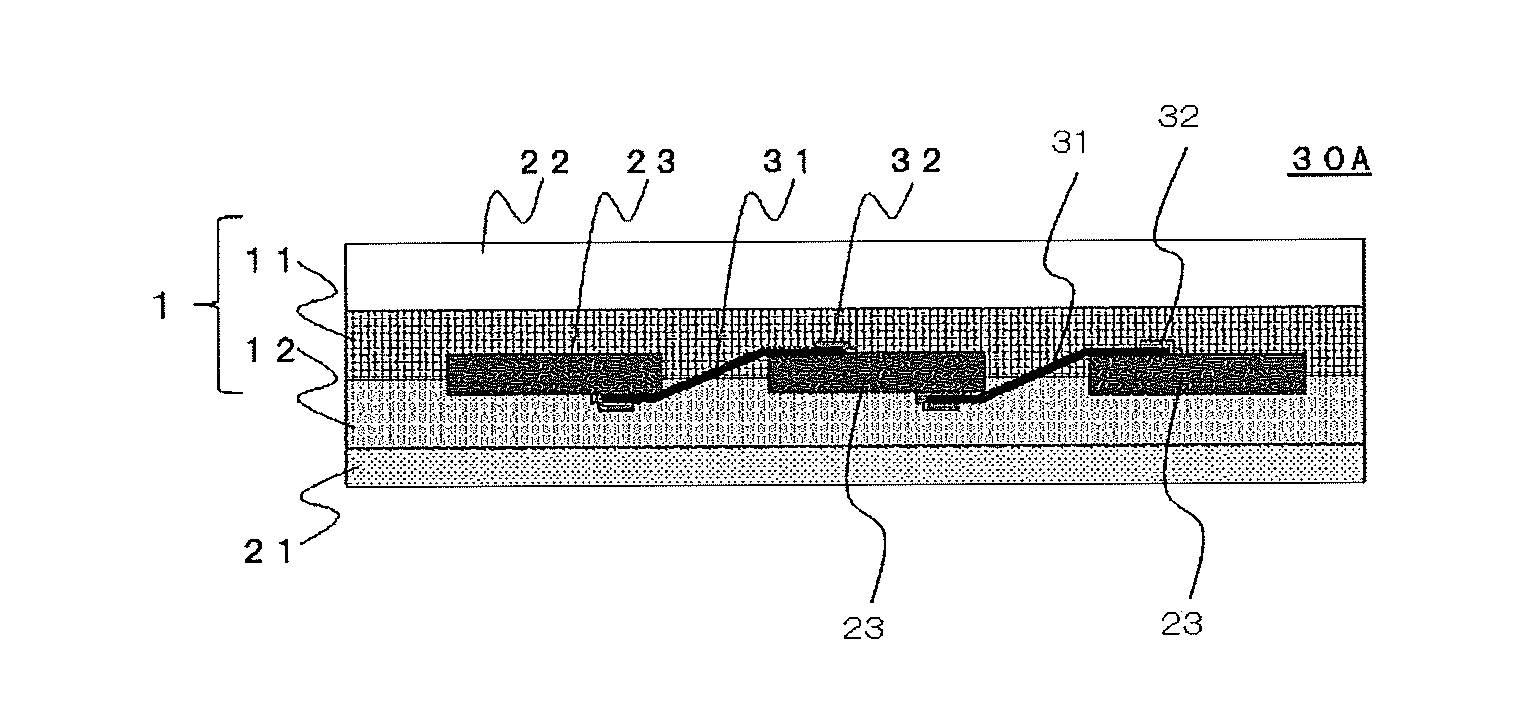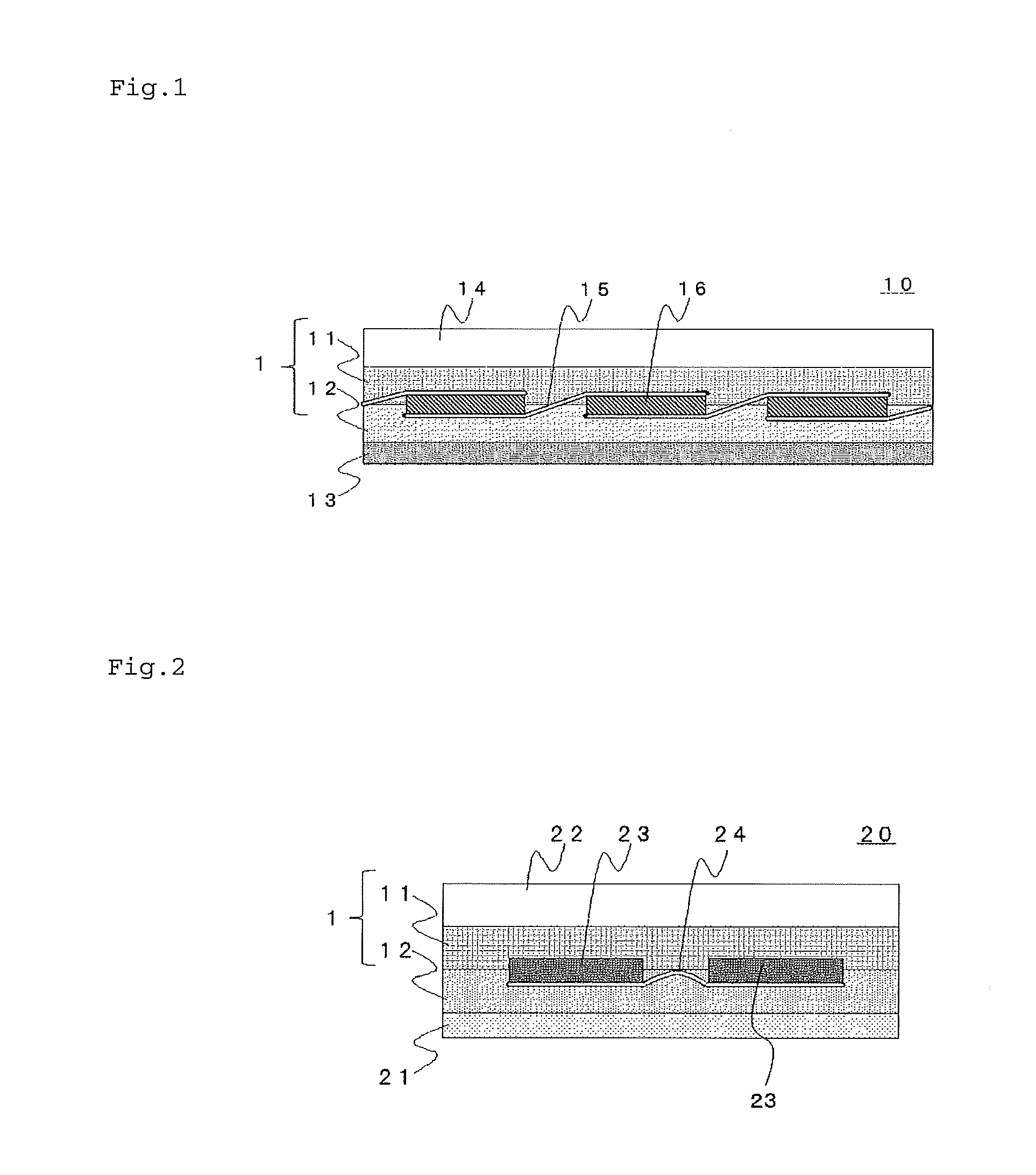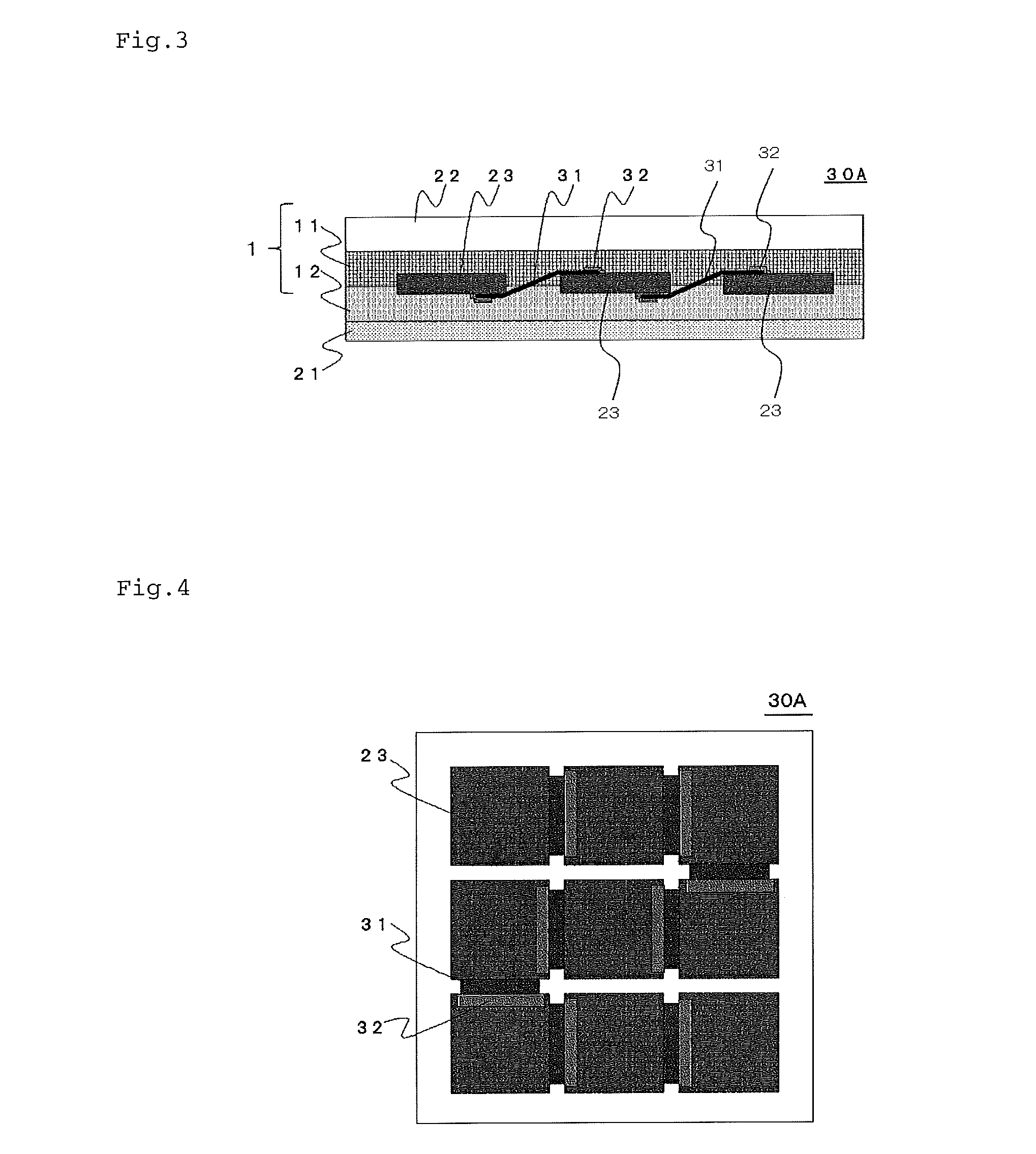Sheet set for encapsulating solar cell, and solar cell module
a solar cell and module technology, applied in the field of sheet sets for encapsulating solar cells and solar cell modules, to achieve the effects of suppressing the application of stress, suppressing the occurrence of cracks in the solar cell element or the breaking of the wiring material, and reducing the difficulty of receiving an influence of a temperature cycl
- Summary
- Abstract
- Description
- Claims
- Application Information
AI Technical Summary
Benefits of technology
Problems solved by technology
Method used
Image
Examples
synthesis example 1
[0199]A toluene solution of methylaluminoxane as a cocatalyst was supplied to one supply port of a continuous polymerization reactor which included a stirring blade and has an inner volume of 50 L, at 8.0 mmol / hr. A hexane slurry of bis(1,3-dimethyl-cyclopentadienyl) zirconium dichloride as a main catalyst was supplied to the one supply port at 0.025 mmol / hr. A hexane solution of triisobutyl aluminum was supplied to the one supply port at a rate of 0.5 mmol / hr. Normal hexane which was dehydrated and refined was continuously supplied so as to cause the total amount of normal hexane to be 20 L / hr which was used as a catalyst solution and a polymerization solution, and was dehydrated and refined. At the same time, ethylene was continuously supplied to the other supply port of the polymerization reactor at a rate of 3 kg / hr, 1-butene was continuously supplied to the other supply port at a rate of 15 kg / hr, and hydrogen was continuously supplied to the other supply port at a rate of 5 NL...
synthesis examples 2 to 3
[0200]A supplied amount of the raw materials et al was adjusted based on the conditions of Synthesis example 1, and thus an ethylene•α-olefin copolymer shown in Table 1 was obtained.
TABLE 1SynthesisSynthesisSynthesisexample 1example 2example 3Type of α-olefin1-butene1-butene1-buteneContent of α-olefin141313unit [mol %]Content of ethylene868787unit [mol %]Density [g / cm3]0.8700.8730.873MFR [g / 10 minutes]204.52.2
(3) Manufacturing of Encapsulating Material Sheet
manufacturing example 1
[0201]0.5 parts by mass of 3-methacryloxypropyl trimethoxy silane as the silane coupling agent, and 1.0 parts by mass of t-butyl peroxy-2-ethylhexyl carbonate which was used as organic peroxide, and had one minute half-life temperature of 166° C., 1.2 parts by mass of triallyl isocyanurate as the crosslinking aid, 0.3 parts by mass of 2-hydroxy-4-normal-octyloxy benzophenone as the ultraviolet absorbing agent, 0.2 parts by mass of bis(2,2,6,6-tetramethyl-4-piperidyl)sebacate as the light stabilizer, 0.1 part by mass of tris(2,4-di-tert-butylphenyl)phosphite as the Heat-resistance stabilizer 1, and 0.1 part by mass of octadecyl-3-(3,5-di-tert-butyl-4-hydroxyphenyl)propionate as the Heat-resistance stabilizer 2 were mixed with each other with respect to 100 parts by mass of an ethylene-vinyl acetate copolymer (EVA).
[0202]A coat-hanger type T dice (lip shape: 270×0.8 mm) was mounted in a single-axis extruder (diameter of screw of 20 mmφ, L / D=28) which is manufactured by Thermo Plastics...
PUM
| Property | Measurement | Unit |
|---|---|---|
| Temperature | aaaaa | aaaaa |
| Temperature | aaaaa | aaaaa |
| Temperature | aaaaa | aaaaa |
Abstract
Description
Claims
Application Information
 Login to View More
Login to View More - R&D
- Intellectual Property
- Life Sciences
- Materials
- Tech Scout
- Unparalleled Data Quality
- Higher Quality Content
- 60% Fewer Hallucinations
Browse by: Latest US Patents, China's latest patents, Technical Efficacy Thesaurus, Application Domain, Technology Topic, Popular Technical Reports.
© 2025 PatSnap. All rights reserved.Legal|Privacy policy|Modern Slavery Act Transparency Statement|Sitemap|About US| Contact US: help@patsnap.com



